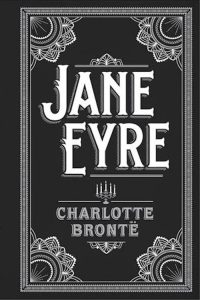
Portrait of Charlotte Brontë
(George Richmond, 1850)
Do you ever wonder what the life of working women, especially governesses was in the nineteenth century? To what extent is one of the most popular novels on the life of a governess, Jane Eyre, a reliable source? These are the questions I would like to answer in this two-part series.
A governess as main character does not make a Victorian Governess Novel – a story about the life and hardships of women offering education to young girls. In Jane Eyre, Charlotte Brontë states that society should accept a woman’s right to gain social and economic independence. Brontë made Jane a governess because it was the only socially acceptable means for a woman from a respectable family to gain money in the Victorian Period, not because Brontë wanted to record the unfair treatment of intellectual working women. Jane is still a governess, however, and Brontë dedicates some of her passages to represent the situation of those ladies who committed their lives to a family unknown to them. But before we look at Jane Eyre and try to decide whether it’s an authentic representation of governesses’ lives in my second post, let me give you some background.

Jane Eyre in the Barnes & Noble Collector’s Editions
Jeanne Peterson in her article “The Victorian Governess: Status Incongruence in Family and Society” analyses what it meant to be a governess in Victorian society. Governesses were women born to upper classes, but because of various economic issues, they had to earn money by working. While governesses faced less public disdain than other working women, their duties changed their lives. A governess had to spend so much time with her pupil she had no time left for tending to her relationships outside her job and it was unlikely for new friendships to develop in the household. A governess was in a complicated situation: as an intellectual gentlewoman, she was more than a servant, but she was not equal to the family she worked for either, due to receiving payment for her job.
There were other difficulties a governess had to face. Peterson mentions the possibility of occupational hazard, suggesting that the relationship between the governess and her pupil was often contentious. A lady not belonging to the family, but living with them was in an uncomfortable situation. The lack of interaction between a governess and gentlemen, and the masculinization of the governess’s role helped to reduce the conflict deriving from social inequalities.
Some of the treatments and stereotypes mentioned above influence Jane’s life at Thornfield Hall, but most of them do not. What can she evade? What does she have to confront? What are her own thoughts about her treatment? The answers to these questions will determine how much Charlotte Brontë tells the reader about the unique position of the governess and about their unfair treatment – whether Jane Eyre is a reliable source on the life of the governess. But we’ll explore that in my second entry.
“The Victorian Governess: Status Incongruence in Family and Society”
by M. Jeanne Peterson on JSTOR
For image sources, see:
Jane Eyre covers (Everyman’s Library; Barnes & Noble Collector’s Edition) on Book Riot
Charlotte Brontë portrait by George Richmond on the National Portrait Gallery’s site


